End abuse, exploitation, trafficking and all forms of violence against and torture of children
What does Target 16.2 mean for businesses?
Consistent with the UN Convention on the Rights of the Child, Target 16.2 seeks to eliminate abuse, exploitation, trafficking and all forms of violence and torture of children. Building on Target 16.1 to end violence in all its forms, this target goes further to highlight that such conduct against children is particularly detrimental due to, among other challenges, the degree of a child’s vulnerability and lack of agency to exercise her or his fundamental rights. In the spirit of the African proverb “it takes a village to raise a child”, Governments, businesses and society at large have a special responsibility to protect, respect and support children’s rights and keep them from harm’s way. This special responsibility is particularly relevant as 2021 marks the International Year for the Elimination of Child Labour.
The following are powerful statistics that reflect the many ways children’s rights are being violated:
- Almost half of the world’s 1 billion children experience some form of emotional, physical or sexual violence each year (WHO, Global Status Report on Preventing Violence Against Children, 2020)
- Globally, one in every three victims of human trafficking detected is a child; but in low-income countries, children account for half of the victims detected, most of them trafficked for forced labour (UNODC, Global Report on Trafficking in Persons, 2020)
- 152 million children aged 5 to 17 are in child labour and about half of them perform hazardous work that places their health, safety or moral development at risk. (Alliance 8.7: ILO, IOM, OECD and UNICEF, Ending Child Labour, Forced Labour and Human Trafficking in Global Supply Chains, 2019)
- Seven out of ten children in child labour work in the agriculture sector (Alliance 8.7 report above)
- Women and girls are disproportionately affected by modern slavery, accounting for almost 29 million, or 71 per cent, of the overall total. This includes sexual exploitation, domestic servitude and other forms of forced labour (Alliance 8.7, Global Estimates of Modern Slavery, 2017)
Governments around the world have mounted legislative responses to the scourge of child labour and human trafficking in business operations, including the 2010 California Transparency in Supply Chains Act in the United States; the 2015 Modern Slavery Act in the United Kingdom; the Child Labour Due Diligence Law in the Netherlands; the 2018 Modern Slavery Act in Australia; and proposed legislation tackling modern slavery in Canada. First and foremost, while eliminating the exploitation of children in business operations and supply chains is imperative for ethical and responsible business conduct, it is also increasingly becoming a matter of legal compliance. While there are no (or limited) penalties for failure to comply, this area requires serious attention by businesses, particularly amidst growing calls by human rights groups for significant liabilities for non-compliance to be imposed.
How should businesses implement Target 16.2?
Businesses have a responsibility to comply with relevant legislation (including international standards) and to effectively manage any risk related to violence against children within their own operations and throughout their supply chains. While such conduct can take many forms, the most common risks to businesses include the abuse, exploitation and/or trafficking of children as a source of inexpensive labour or sexual exploitation. Moreover, with the growing prevalence of social media, children are susceptible to bullying and harassment, graphic content and invasion of privacy. All of these can have a devastating effect on a child’s development and can last throughout his or her life.
The Children’s Rights and Business Principles (Children’s Principles) guides businesses to ensure that children’s human rights are respected and supported; eliminate child labour from all activities and relationships; provide decent work for young workers, parents and caregivers; ensure the protection and safety of children in all activities and facilities; ensure products/services are safe for children; and ensure appropriate advertising/marketing for children.
Businesses can have a significant impact on children’s lives and should therefore leverage their capacity and influence to work with Governments and civil society to keep all children healthy and safe within their homes and communities. For example, they can work with Governments to provide incentives and support to small-to-medium enterprises (SMEs) for addressing child labour in their own operations. And to mark the International Year for the Elimination of Child Labour, the UN Global Compact calls on all businesses to take action to eliminate child labour and participate in its End Child Labour Pledge.
UNICEF has also released a tool for investors on integrating children’s rights into ESG analysis. The tool offers guidance and a methodology for assessing children’s rights in portfolio companies but can also be used as a basis for engaging investee companies around their policies, practices and child rights related disclosures.
Here are some ways businesses can take action
Culture
Adopt a zero-tolerance approach against abuse, exploitation, trafficking or other forms of violence against children within a business’ operations, products and services and throughout their supply chains.
Policies and processes
Establish standards that ensure children are protected against any harm that may be directly linked to business activities and/or that the business may cause or contribute to. Businesses should also include appropriate provisions in contracts or service agreements with third parties to protect against such violations.
Human rights due diligence
Ensure that any risk of abuse, exploitation, trafficking or other acts of violence against children, especially through child labour, are captured as part of a robust human rights risk assessment, due diligence and auditing throughout a business’ own operations and supply chain.
Hotlines and grievance mechanisms
Develop, implement, monitor and adequately resource channels for employees and third parties to report any instances of abuse, exploitation or any form of violence against children that may be directly linked to business activities and/or that the business may cause or contribute to. Ensure that such instances are appropriately investigated and resolved and are also reported to the relevant authorities as required by law.
Education and support
Develop and ensure mandatory training for all employees explaining the possible forms of, and settings where, instances of violence against children can occur. Businesses are also encouraged to provide support to employees and/or customers in ensuring the safety and well-being of their children in instances of domestic or family abuse.
Reporting and risk management
Ensure that risks with respect to child labour are accurately reported and effectively managed. Such efforts include compliance with any national and regional legislation and, wherever possible, other international standards and voluntary benchmarks or frameworks.
Board/management oversight, culture, strategies, policies, operations and relationships
Advocacy
Lead, promote and support the development of and/or adherence to legal and voluntary frameworks that serve to protect and respect children’s rights. These efforts can include advocating for the enactment and enforcement of laws to eliminate abuse, exploitation, trafficking and other forms of violence against children, and encouraging all businesses to adopt normative standards such as the Children’s Principles and commit to the End Child Labour Pledge.
Influence
Support efforts to educate communities and other stakeholders on the possible forms of, and settings where, instances of violence against children can occur. Encourage them to report any abuse, exploitation, trafficking or other such instances to the relevant authorities.
Capacity building
Work with law enforcement agencies and civil society organizations to identify, apprehend and prosecute any suspected perpetrators of abuse, exploitation, trafficking or any other acts of violence against children.
Collective action and partnership
Participate in Global Compact Local Networks or other business/industry association activities that raise awareness of and eliminate all forms of violence against children including, but not limited to, child labour within business operations and relationships. Businesses share many of the same third-party suppliers and/or manufacturing facilities which allow them to share information and cooperate to address instances of child exploitation.
Institutions, laws and systems at the international, national and municipal levels
Here are some ways businesses are taking action
-
Anti-Trafficking Awareness Campaign
This initiative was developed by anti-human trafficking experts Polaris with the support of Delta Airlines. It shines a light on the estimated 25 million people enslaved around the world and calls on passengers to #GetOnBoard in addressing this global scourge. It includes prominent signage at major airports and an inflight video that puts a human face to the tragedy of human trafficking through the eyes of a young boy — the trafficking victim. The video is typically announced and displayed on all aircrafts during Human Trafficking Awareness Month. The campaign includes a National Human Trafficking Hotline for the general public to report suspected instances of human trafficking and to provide support services to trafficking victims. (Source)
- Child Labour Monitoring and Remediation System (CLMRS)
A programme developed by Nestlé to identify children at risk, raise awareness and provide remediation measures appropriate to each case and family circumstance. Since 2012, significant progress has been made — for example, Nestlé monitors nearly 80,000 children at risk of child labour and has helped more than 40,000 children access education. They will continue to expand the reach of the CLMRS across the cocoa supply chain in West Africa and contribute to tackling the root causes of child labour. (Source)
- Cotton Campaign
The Cotton Campaign is a global coalition of apparel brands, investors, human rights and labour organizations dedicated to eradicating child and forced labour in cotton production in Central Asia. The main objective is to end the state systems of forced labour in Uzbekistan and Turkmenistan, with significant progress underway in Uzbekistan. The initiative includes recommendations for companies (and investors) that use cotton sourced from and/or operate in Uzbekistan and Turkmenistan. Over 300 apparel brands have supported this pledge. (Source)
- Ending the Silence on Domestic Violence
In response to the significant rise in domestic violence cases resulting from extended lockdowns during the COVID-19 pandemic, Unilever has made its Global Domestic Violence and Abuse Policy available to help other employers put measures in place to support employees and customers. (Source)
- It’s a Penalty Campaign
It’s a Penalty has been working to disrupt human trafficking and exploitation through awareness-raising campaigns harnessing the power of sport to prevent trafficking and exploitation on a global scale. Their research and advocacy work ensures that children worldwide are legally protected from sexual exploitation and abuse. Through collaboration and partnership with strategic stakeholders — such as high-profile sporting athletes, the travel and tourism industry (including airlines, hotels and transportation companies), sporting governing bodies/hosting committees, non-governmental organizations, Governments and corporates — It’s a Penalty has had a significant impact. (Source)
- PACE Consortium
The Partnership Against Child Exploitation (PACE) is a partnership of the private sector, academic, media development and civil society organizations funded by the Government of the United Kingdom. The Consortium, which includes Global Compact Network DRC and Global Compact Network UK, seeks to combat children's exploitation in the worst forms of child labour (WFCL) as defined in International Labour Organization (ILO) Convention No. 182. The programme targets three African countries: Central African Republic, the Democratic Republic of Congo and Ethiopia. (Source)
- Piecitos Colorados (Little Red Feet) Project
Prosegur, the largest security company in Spain, supports 37 schools across Argentina, Chile, Colombia, Paraguay, Peru and Uruguay. Project Piecitos Colorados (or Little Red Feet) helps more than 5,000 students by alleviating the effects of the pandemic on school closures, especially in the most vulnerable communities. Efforts include providing computers and tablets and other school supplies directly to students and teachers; providing support to scholarship students at the secondary and tertiary levels, including facilitating regular contact with families; and partnering with educational partners to provide spaces for exchange and learning for teachers. (Source)
- Tech Against Trafficking
A coalition of information, communications and technology (ICT) companies collaborating with global anti-trafficking experts to help eradicate human trafficking using technology. ICT companies such as Amazon, AT&T, BT, Microsoft, Nokia, Salesforce and Vodafone have pooled their expertise, capacity for innovation and global reach to advance technology applications that help prevent and disrupt human trafficking and empower survivors. They identify and investigate opportunities to develop and scale promising technologies to address this scourge. (Source)
- Training to Combat Child Labour in Supply Chains
Mango, a large textile company in Spain, plans to deliver due diligence training throughout its supply chain in an effort to eradicate child labour. This initiative includes developing a supply chain risk map, which will include geographic hotspots; partnering with supply chain experts (Industry CCOO, Alliance Member 8.7) to develop a training programme for suppliers in countries with a high risk of child labour; and piloting the training programme with suppliers in a pre-determined country. (Source)
Some industries that could/should contribute to achieving Target 16.2
This list is not exhaustive but rather intended to invite businesses to consider how their sector could or should contribute to this target.
Hospitality, transport and travelSectors including accommodation, bars/restaurants/caterers and transport/travel via air, maritime, rail and road can play a critical role in working with civil society organizations and law enforcement agencies to identify and apprehend human trafficking suspects and provide immediate assistance to their victims.
Consumer and retail goodsBeverage, food, apparel, footwear and sporting goods businesses can and must support the elimination of child labour and abuse, exploitation or other forms violence against children through their operations, products and services and supply chains.
ExtractivesThe Voluntary Principles on Security and Human Rights provides operational guidance to ensure human rights safeguards in security arrangements related to extractive operations, especially in proximity to conflict zones. Relying largely on the Voluntary Principles framework, a Child Rights and Security List Checklist identifies 14 criteria for companies and Governments to assess how security arrangements protect children’s rights.
AgricultureAccording to the ILO Child Labour in Agriculture, the agriculture sector accounts for 71 per cent of child labour and is one of the most dangerous for work-related fatalities and injuries. Special attention should be paid to multi-stakeholder cooperation and policy implementation to prevent child labour and to promote safer work practices.
Information, Communications, Technology (ICT)The ICT sector can and must do more to prevent its platforms from being used to facilitate violence against children in the forms of abuse, bullying, harassment, sexual exploitation and trafficking.
Some intersections with Target 16.2 and the Ten Principles, UNGPs and SDG16+
These intersections are not exhaustive but rather intended to demonstrate how foundational SDG 16 and, specifically, this target is.
Inspired by the Ten Principles and UNGPs
Corruption and organized crime, children’s rights, human trafficking/modern slavery, gender-based violence, ethnic minorities, undocumented individuals.
Inspired by the Pathfinders SDG16+ Roadmap
SDG 4: Quality Education
- Equal access to education (Target 4.5)
- Culture of peace and non-violence, education on human rights and gender equality and promotion of global citizenship (Target 4.7)
- Safe and non-violent education facilities (Target 4.a)
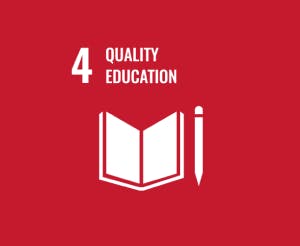
SDG 4: Quality Education
SDG 5: Gender Equality
- Discrimination against women and girls (Target 5.1)
- Violence against women and girls (Target 5.2)
- Child and forced marriage and female genital mutilation (Target 5.3)
- Policies and legislation for gender equality (Target 5c)

SDG 5: Gender Equality
SDG 8: Decent Work and Economic Growth
- Forced labour, modern slavery and human trafficking, including child labour and child soldiers (Target 8.7)
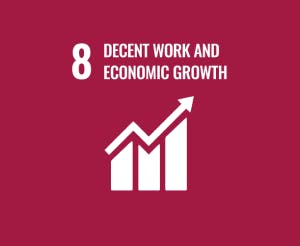
SDG 8: Decent Work and Economic Growth
SDG 10: Reduced Inequalities
- Social, economic and political inclusion (Target 10.2)
- Equal opportunity laws, policies and practices (Target 10.3)
- Policies for greater equality (Target 10.4)
- Global, financial and economic institutions (Target 10.5, 10.6)
- Migration policies and safe migration (Target 10.7)
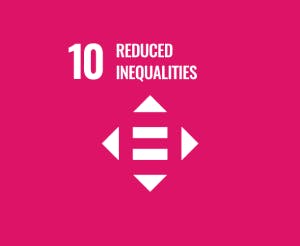
SDG 10: Reduced Inequalities
SDG 11: Sustainable Cities and Communities
- Safe housing (Target 11.1)
- Safe transport (Target 11.2)
- Safe public spaces (Target 11.7)
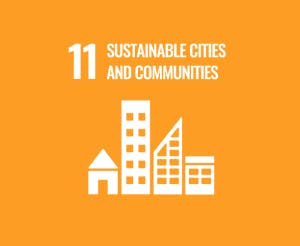
SDG 11: Sustainable Cities and Communities
SDG 16: Peace, Justice and Strong Institutions
- All forms of violence (Target 16.1)
- Rule of law and access to justice (Target 16.3)
- Illicit financial flows and all forms of organized crime (Target 16.4)
- Legal identity (Target 16.9)
- Public access to information (Target 16.10)
- Violence prevention (Target 16a)
- Non-discriminatory laws and policies (Target 16b)
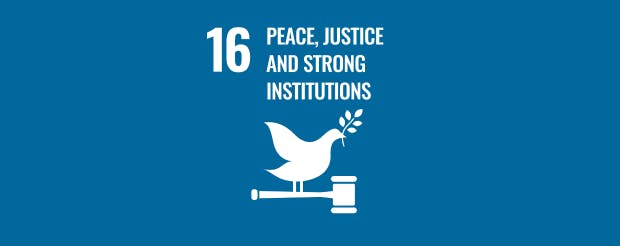
SDG 16: Peace, Justice and Strong Institutions
- Child Labour Monitoring and Remediation System (CLMRS)
